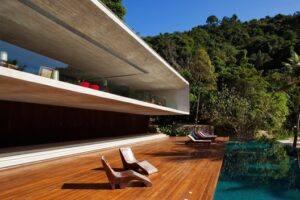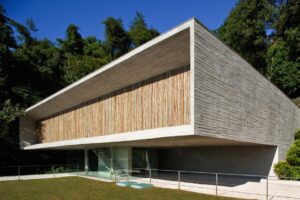In some cases, the resource is the only viable technique to solve project constraints, such as the lack of space to support reforms and complex land.
Suspended in the air, the cantilevered structure is an architectural feature that gives visual lightness to the project and eases the circulation below it, as it extends in a levitated way, with no visible supports touching the ground. Support occurs at only one end of the structure, by anchoring or by counterweight.
To better understand the feature. We can point out some examples present in our day to day. “A wall-mounted shelf is a microscale application. Another example is the construction of a bridge, on the opposite scale, which can be carried out by two piers supporting large cantilevered structures.
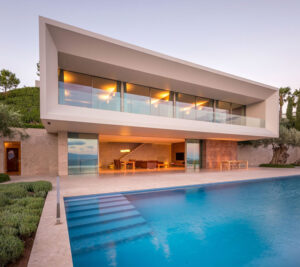
ESTHETICS X FUNCTION
The balance sheet structure is predominantly used for technical purposes. In some cases, it may be the only viable resource for solving project constraints, such as the lack of space to support the structure in renovations, complex land, among other situations.
However, nothing prevents the architect to design the structure in balance for compositional desire, defying the law of gravity. Something that has always interested human beings.
The cantilevered structure adds a unique characteristic to the project. “Due to the bold structure, with less support, it gives a feeling of lightness.
Other than that, the balance sheet also appears as a smart way to allow activities to happen below the structure, such as car circulation, for example. At smaller scales, the resource is also used on roof overhangs, marquees and balconies.
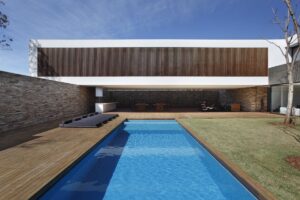
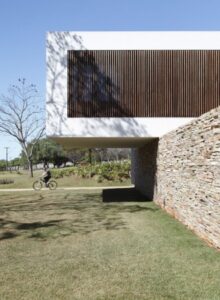
PROJECT CARE
In order to design a cantilevered structure, rigorous structural calculation in relation to anchoring or supporting counterweight is required before the suspended plane. In addition, other aspects must be considered in the calculation, such as loads that will be applied to the structure, size of the volume that will be suspended (slenderness) and terrain where the execution will be carried out.
In addition to the calculations, the correct positioning of the armatures constitutes another precaution regarding the structural design of the balance sheet, in order to avoid cracks and deformations.
When the project is born with the balance sheet premise, the entire concept of construction facilitates the projection of the resource. This is the case with continuous beams, in which a section protrudes in a cantilever.
The execution of the balance can be done with prefabricated materials or with solutions molded in loco, such as reinforced or prestressed concrete.
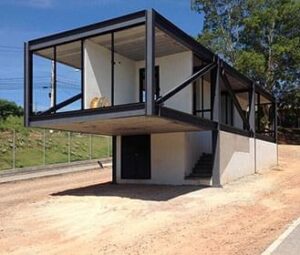
IMPACT ON THE COST OF THE WORK
Compared to conventional plans, the cantilever structure has slightly higher construction costs, as it is an unconventional structure, which requires different materials and quantities.
Costs can increase depending on the characteristics of the balance, as in the case of requiring a greater amount of reinforcement or to make more bold structures possible, or of the need to install a hydraulic jack to toss the steel cables, in the case of opting for prestressed concrete. , in loco.
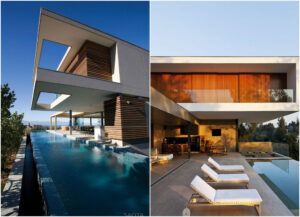
PRESTRESSED CONCRETE IN RESIDENTIAL PROJECTS
For building construction, prestressed concrete is an excellent alternative whose potential still needs to be better explored by Brazilian engineers and architects. There are several technical advantages that bring enormous benefit to works that use this type of system.
In addition to the structural security provided by prestressing, this system allows greater creative freedom in terms of aesthetics and design of the residence. The main advantage of prestressing concrete, with regard to the aesthetic part, is the reduction of the section of the beam and columns. This means that the framework exposed in the construction does not require covering, as is the case with reinforced concrete.
The frame anchors in prestressing systems are small and inexpensive. In addition to making the built environment much more modern and broad, this method can reduce costs and bring greater sustainability to the work.
THE ADVANTAGES OS PRESTRESSED CONCRETE FOR BUILDING CONSTRUCTION
In relation to reinforced concrete, the main advantage of the prestressing system is the absence of the formation of cracks on the concrete surface, reducing its maintenance cost. That is, prestressed concrete has greater resistance to high tensile efforts, despite its ease of handling.
The practicality of the prestressing system is not limited to its transport. Steel strings, greased and laminated, are very resistant to degradation that can occur at the construction site. In addition, the ease of handling makes the construction process much more efficient.
The positioning of the cables in the dimensions is done with the support of the “little chairs”, which are plastic or steel parts that serve as guides for the correct cabling. To lift the cables to their final point, hydraulic jacks that weigh around 19 kg are used with the aid of small hydraulic pumps (35 kg). Both are lightweight and easy to transport.
To reinforce the concrete, a single elevation is carried out. Once the plastic sheath is fitted to the wire rope, there is no step of injecting cement paste to secure the cables, which reduces operating costs and raw materials in construction.
For these reasons, the prestressing system for concrete allows greater organization of both logistics and the construction site, when compared to simple reinforced concrete. In other words, prestressed concrete optimizes the use of resources, making the work more sustainable and energy efficient.
EXAMPLES OF HOMES THAT USE PRESTRESSED CONCRETE IN THEIR DESINGS
There are several examples of works of Brazilian architecture that use prestressed concrete as a base. Among them, the São Paulo Museum of Art (MASP) stands out with its huge free span and the Oscar Niemeyer Museum in Curitiba. Below are other examples where prestressed concrete was used in homes:



